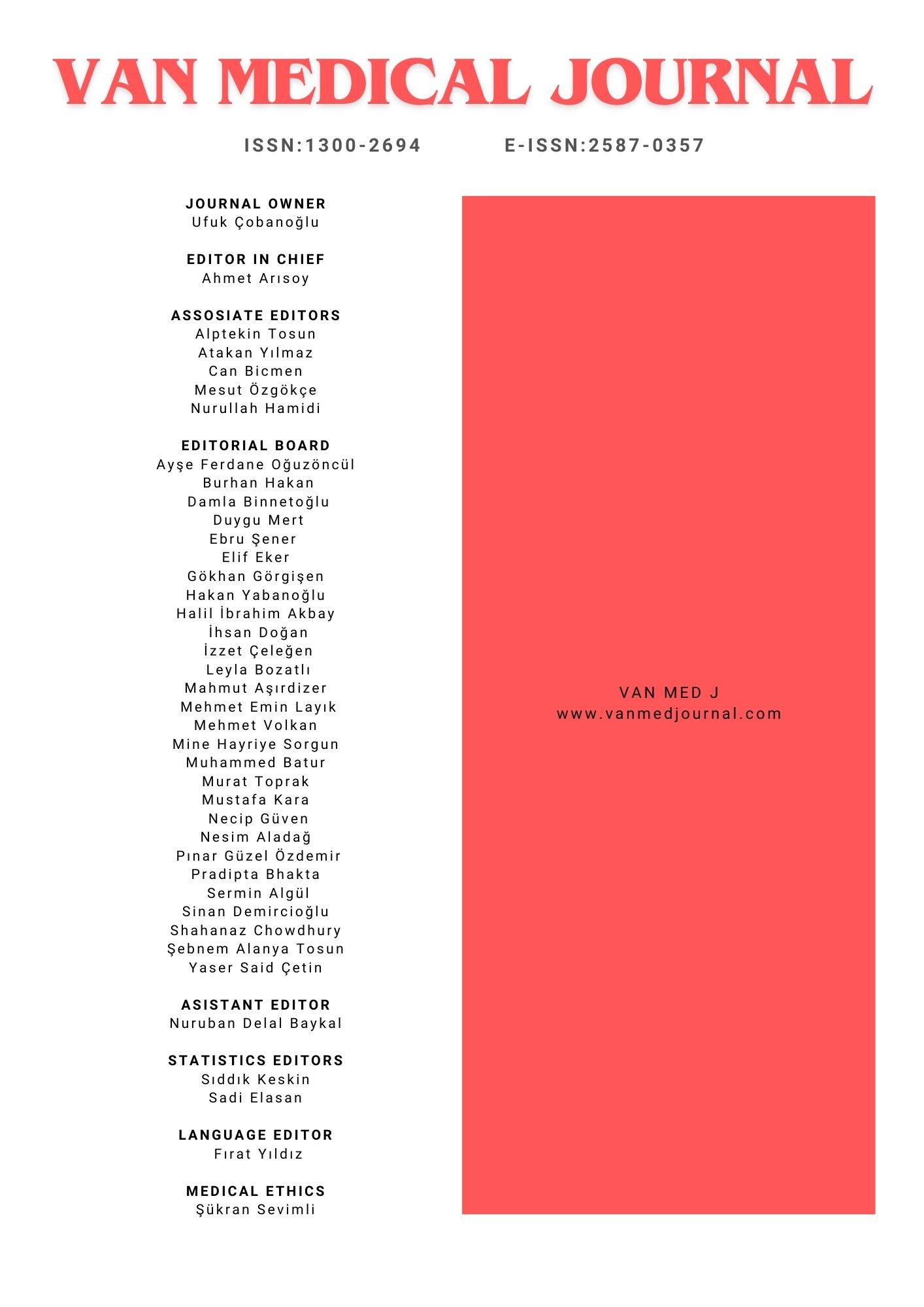Crime Scene and Autopsy Findings in two Cases of Sudden Death Caused by Inhalation of Butane Gas
Erhan Kartal1, Yasin Etli2, Uğur Demir3, Uğur Ata4, Mahmut Asirdizer51Department of Forensic Medicine, Van Yuzuncu Yil University, Van, Turkey2Department of Forensic Medicine, Selcuk University, Konya, Turkey
3Department of Forensic Medicine, Tokat State Hospital, Tokat, Turkey
4Hakkari Forensic Medicine Branch Directorate of Forensic Medicine Institute. Hakkari, Turkey.
5Department of Forensic Medicine, Bahcesehir University, Istanbul, Turkey
Solvent inhalation is still an important public health problem that is responsible morbidity and mortality of young people worldwide and has adverse effects on society. In Turkey, solvent inhalation is the most common substance abuse following smoking and alcohol addiction, and butane and propane have been reported to be the most frequently inhaled substances. In this study, the crime scene information is presented, with the pathology and toxicology analysis results of two cases of death due to inhalation of n-butane, one as suicide and the other accidentally. Although clinical findings were described in detail in cases hospitalized due to butane gas inhalation and in death cases, the number of articles describing crime scene and autopsy findings is limited. In this case report, it is aimed to describe of the findings that they may encounter during the crime scene and death examination, especially for general practitioners and autopsy findings of cases.
Consequently, it is important for the general practitioners participating in the corpse examination to be careful about the crime scene and the findings on the corpse, for accurate toxicological analyzes and accurate determination of the cause of death. These physicians should give clues to forensic experts about signs such as thinner, glue, or gas source near the corpse, a plastic bag placed on the head of the corpse, vomit stains near the corpse or on their clothing.
Bütan Gazı Soluması Sonucu Meydana Gelen İki Ani Ölüm Olgusunda Olay Yeri ve Otopsi Bulguları
Erhan Kartal1, Yasin Etli2, Uğur Demir3, Uğur Ata4, Mahmut Asirdizer51Van Yüzüncü Yıl Üniversitesi, Tıp Fakültesi, Adli Tıp Anabilim Dalı, Van2Selçuk Üniversitesi, Tıp Fakültesi, Adli Tıp Anabilim Dalı, Konya
3Tokat Devlet Hastanesi, Adli Tıp Bölümü
4Adli Tıp Kurumu, Hakkari Adli Tıp Şube Müdürlüğü, Hakkari
5Bahçeşehir Üniversitesi, Tıp Fakültesi, Adli Tıp Anabilim Dalı, İstanbul
Solvent inhalasyonu halen dünya çapında gençlerin morbidite ve mortalitesinden sorumlu olan ve toplum üzerinde olumsuz etkileri bulunan önemli bir halk sağlığı sorunudur. Türkiye'de solvent inhalasyonu, sigara ve alkol bağımlılığından sonra en sık görülen madde kötüye kullanımı olup, bütan ve propanın en sık solunan maddeler olduğu bildirilmiştir. Bu çalışmada, biri intihar, diğeri kaza ile n-bütan solunması sonucu meydana gelmiş iki ölüm vakasının patoloji ve toksikolojik analiz sonuçları ile olay yeri bilgileri sunulmaktadır. Literatürde, bütan gazı solunmasına bağlı olarak hastaneye kaldırılan olgularda ve ölüm olgularında klinik bulgular ayrıntılı olarak tanımlanmış ise de, olay yeri ve otopsi bulgularını tanımlayan makale sayısı sınırlıdır. Bu olgu sunumunda, özellikle olay yeri ve ölü muayenesinde pratisyen hekimlerin karşılaşabilecekleri bulguların ve otopsi bulgularının tanımlanması amaçlanmıştır.
Sonuç olarak, ceset muayenesine katılan pratisyen hekimlerin doğru toksikolojik analizler ve ölüm sebebinin doğru tespit edilebilmesi için, olay yeri ve ceset üzerindeki bulgular konusunda dikkatli olmaları önemlidir. Bu hekimlerin, cesede yakın yerde bulunan tiner, yapıştırıcı veya gaz kaynağı, cesedin başına geçirilmiş naylon torba, cesedin yakınında veya giysilerinde bulunan kusmuk lekeleri gibi bulguların varlığı veya yokluğu konusunda adli tıp uzmanlarına ipuçları vermeleri gerekmektedir.
Corresponding Author: Mahmut Asirdizer, Türkiye
Manuscript Language: English

